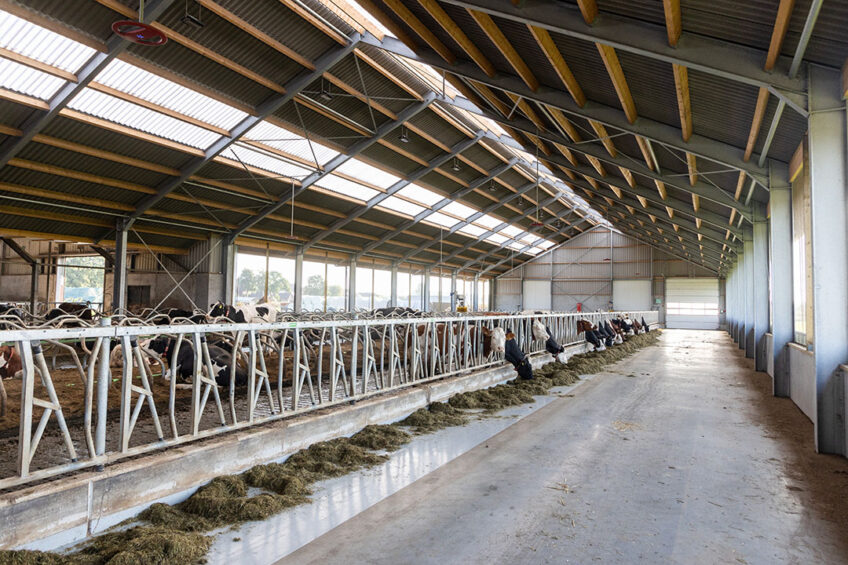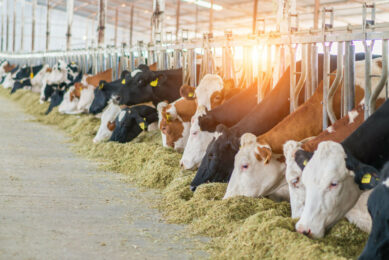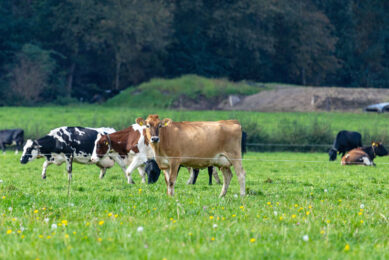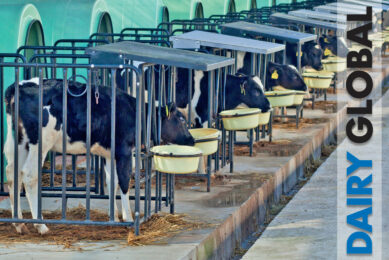How do cows perform under different housing systems?

Although studies have examined the effects of various environmental factors on cows’ performance, seldom have the effects of house type and facilities been taken into account. The following is a review of the effects of house design and microclimate on cows’ nutrient requirements, fertility, milk production, immunity and body condition.
A study was conducted to compare feed utilisation and milk production of cows kept in stanchion and loose housing. Maintenance requirements were 5–10% less in stanchion barns than in loose housing, probably because of the reduced amount of movement of cows under the stanchion system. As a result, milk production was better in the stanchion compared to in the loose housing (20.2 kg vs. 17.7 kg) since a greater part of the feed is utilised in this case for productive purposes.
The incidence of the most frequent disorders is shown in Table 1. From these results, it appears that cows in stanchion barns have more frequent mastitis but less frequent hoof disorders and skin alterations than cows in loose housing. In addition, a high degree of dirtiness of hind legs and udder was found in the loose housing system, probably due to the increased dampness of the floor and lack of daily cow-cleaning regimens. It should be noted though that factors making cows susceptible to different disorders and body conditions are not specific to the types of barns. Minimum incidence within a given type of housing can be achieved with correct stocking density and proper health and biosecurity programmes.
Table 1 – Incidence of health problems (%) in cows kept in different types of barns.
Flooring
One study found that covering the floors of loose barns with sheets of soft rubber that mimic pasture soil helps to achieve the following advantages compared to solid concrete floors:
1. The animals tend to stagnate and relax on the soft floor for up to 14 hours a day. This helps improve blood circulation in the udder and hence increases milk production.
2. Soft ground helps to increase the efficiency of oestrus detection by increasing the mounting rates; on hard floors, these rates are lower due to the fear of slipping.
3. Persistency of lactation (rate of decline in lactation after peak milk production has been reached) was better for the slatted or rubber floor (-0.86) compared to the concrete floor (-0.97).
4. Soft floors allow unrestricted animal movement inside the barn. This helps improve blood circulation in the living tissue of the hooves, thus providing more protection for the hooves and increasing the ability of their outer edges to carry the bulk of the animal’s weight while walking.
Cooling
Studies on air conditioning showed an increase of 9.4% in milk production and 11–20% in fertility. However, the benefits of increased milk production and fertility were not, in many cases, sufficient to offset the expenses of operating the unit.
Foggers and sprinklers may also be used to increase heat loss by evaporation. Results with these structures showed an increase in animal performance. However, there were many cases of foot disorders and excessive flies when foggers were used. Sprinklers are sophisticated structures, and intensive care should be taken when using them. If water flow is blocked for any reason, animals may not be acclimated again to their environment and many problems may arise. If the system is automated, increased costs would be added to these disadvantages.
Ventilation
Typically, a mature dairy cow will breathe out 4–5 gallons (15–19 litres) of water per day as water vapour and produce 600–700 watts of heat. Ventilation systems continuously remove the heat, moisture and odours created by livestock and replenish the oxygen supply by bringing in drier, cooler outside air.
Adequate air exchange also removes gases such as ammonia, hydrogen sulfide and methane, which can be harmful to both animal and operator health. Naturally ventilated barns must have sufficient and properly located openings that can be adjusted to take advantage of buoyancy effects, as well as wind forces and direction. Mechanical ventilation may also be adopted for these purposes, but in many cases, no differences in milk yield or lactation persistency were found between cattle houses being naturally or mechanically ventilated.
Feeding facilities
Competition among dairy cattle for feed space may cause stress, production losses and health issues. The provision of an adequate feed space (70–75 cm per cow) can help alleviate these problems. Also, the feed table surface needs to be easy to clean and keep clean. It should be noted that silage is an acidic feed and will erode plain concrete feed table surfaces. Surfaces like tile, poly, stainless steel and even some concrete additives are resistant to acid and will keep the feed table smooth after years of use.
The feed barrier, which might be a post and rail, should allow the cows easy access to the feed in front of them. Cows may exert 225 kg of pressure against the barrier to reach feed, while only 100 kg of pressure can cause tissue damage to their necks and shoulders. The rail needs to be high enough for animals to easily reach under it for their feed. This height is often set at 120 cm above the cows’ front feet and 10–20 cm ahead of the feed curb.
Join 13,000+ subscribers
Subscribe to our newsletter to stay updated about all the need-to-know content in the dairy sector, two times a week.










